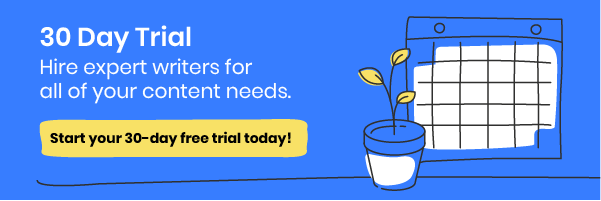- Blog Home
- Ciara Antolini
- Beginner's Guide To Email Marketing
Beginner's Guide to Email Marketing
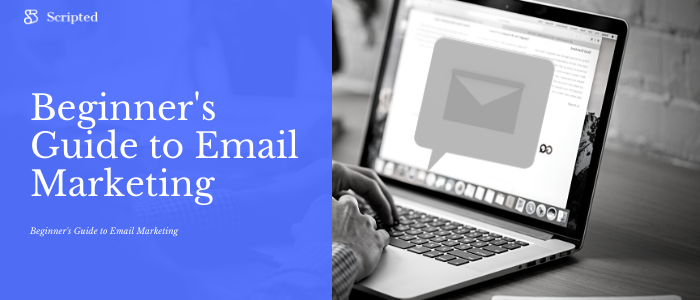
A Beginner’s Guide to Email Marketing
As the marketer of a brand, you have all sorts of exciting new technology to explore. From virtual and augmented reality to artificial intelligence, machine learning, chatbots, and the rapidly successful new social platforms that seem to appear overnight, it's easy to dismiss an old classic like email marketing. However, as marketing guru Neil Patel points out, "Email marketing is still ranked as the most effective marketing channel, beating out social media, SEO, and affiliate marketing."
If you've thought about dismissing email marketing as a top priority for your brand, you'd be making a big mistake. In defense of email marketing, Patel adds that email will always be in your control. Once you build your list, there are no algorithms or special strategies you have to contend with in order to reach those people. What's more, marketing to your email list is virtually free, aside from the cost of any sending or design tools, and the ROI remains incredible — as high as 4400%.
Of course, there's a big problem with email marketing: Most brands aren't doing it right. So, let's dive into the step-by-step process and best practices you should follow in order to get the results you want out of your email marketing efforts.
How to Use Email Marketing
Whether you're starting from scratch or taking a new approach to an established email marketing list, here are the steps you need to follow to do it right.
1. Build Your Email List

It's impossible to begin email marketing unless you have email addresses to market to. This is where a lot of beginners make their first major mistake, sometimes attempting to shortcut the process by purchasing a pre-made email list rather than building one from scratch. Not only is this a waste of money, it's also a surefire way to get your brand's email flagged as spam by all the major email providers.
The golden rule of email marketing is straightforward: Never send an email unless the recipient explicitly opted into receiving your emails. Failing to follow this golden rule means your email address and even your domain can end up on a blacklist, making it difficult (if not impossible) to consistently reach users even when they opt-in for your emails.
Fortunately, building an email list is not as tough as you may think. The trick is to start by figuring out the other fundamentals, like driving traffic to your content, if you're starting from scratch. Once you have traffic to work with, you can start getting some of your visitors to sign up for your emails, and many proven methods exist to help you do that.
You can build your email list more quickly by:
-
Lead Magnets: Offering an incentive to those who sign up for your emails is a great way to convince people. Advertise a relevant whitepaper, eBook, or discount code exclusively to people who enroll in your list.
-
Contests and Giveaways: Running a contest or giveaway for your subscribers can entice them to opt in for the chance to win a valuable prize. Just make sure you maintain compliance with state and local giveaway laws.
-
Exclusive Content: Advertising exclusive content that’s only available to email subscribers, in the emails themselves or by putting content on your site behind an email-based login, can generate a substantial amount of leads.
You can use a combination of some or all of these methods to get subscribers for your email list.
2. Design Your Emails
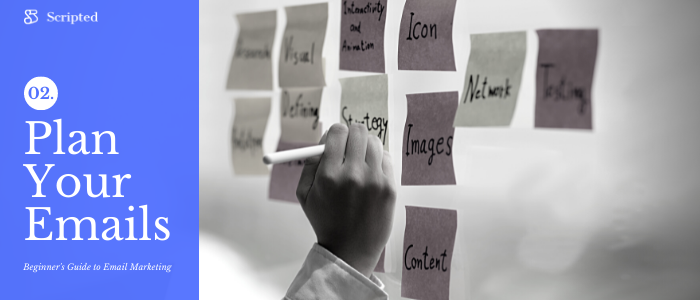
When was the last time you received an ordinary plain-text email from a sought-after brand? It’s exceptionally rare for any reputable brand to send out an email that doesn't have an eye-catching design. You can't simply type up an email right there in your email client and send it to your list, expecting everyone to open it, read it, and respond to it. Given the sheer volume of emails people receive each day, yours will need to truly shine if it’s going to stand out.
You also need to ensure you're hitting subscribers' expectations in other ways. For example, if they were promised one email per week when they signed up for your newsletter, you should make sure you're sending that email on a consistent basis. Failing to do so can increase the number of unsubscribe requests you see when you finally get around to emailing them again. Likewise, you shouldn't send emails more often than you promised, as that can grow annoying.
Here are a few common tips to build out your brand new email marketing strategy:
-
Welcome Email: Start out with a welcome email, thanking them for subscribing and setting expectations for both the frequency and value of your future emails.
-
Branding and Design: Craft emails that resonate with your brand’s aesthetics. Prioritize engaging content to ensure it's the first thing subscribers see when opening it.
-
Adherence to Guidelines: Stay compliant with email regulations. This includes ensuring an easily accessible and visible unsubscribe link in every email.
-
Purposeful Communication: Ensure that every email serves a distinct purpose and offers clear value to the recipient. Avoid sending emails “just for the sake of it.” If your content isn’t meaningful, relevant, and beneficial, recipients will unsubscribe.
In addition to the above, it's worth stating the obvious, and that is: Always make sure your emails are enticing, worthwhile, and meaningful. Don't send out an email "just because." Every email should have a purpose and a clear benefit to the reader. Otherwise, recipients will quickly unsubscribe or, worse, mark your emails as spam.
3. Offer Value
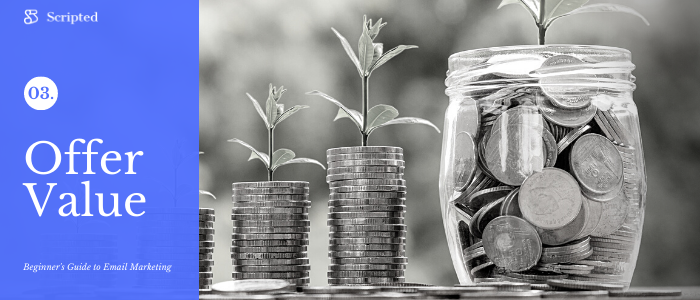
Subscribers join your email list seeking genuine value. This could be in the form of exclusive discounts, unique content, or insights not readily available elsewhere. Whether you’re offering a daily digest type of email, a monthly roundup, etc., your subscribes expect to get some kind of value in return for their trust in sharing their email with you.
With that said, the only way to make email marketing profitable is to eventually try and sell something to your list. The tricky part is knowing how you handle the transition from delivering value to making a sales pitch. Prematurely pushing sales can push people away from your brand and right to that unsubscribe button. Here’s how to strike that balance:
-
Build Sequences: There’s no such thing as a one-and-done approach to successful email marketing. A good rule of thumb is between four and six emails (all sent separately) that gradually build toward a hard sell.
-
Prioritize Value: Before anything else, make sure your emails consistently offer value. Fortunately, with Gen AI, personalizing your content to your recipients is a breeze. Unfortunately, even a personalized sales pitch, if it becomes the norm, can stop people from opening your emails at all.
-
Segment Your List: People are different and it’s those differences that can help you add value to their day and your brand. Divide your list by subscriber preferences or behaviors and approach each group in a way tailored to them.
-
Strategize Your Pitch: When you’re finally ready to make an offer, make sure it aligns with the interests of your subscribers. Advanced analytics can help you learn what’s most likely to earn their engagement.
-
Maintain Trust: Above all, respect the trust your subscribers have placed in you. Overloading them with sales pitches can lead to unsubscribes. Always prioritize their expectations and preferences over your desire to make a sale.
Depending on your business, you may end up making offers more often than not, and that's okay, as long as your emails align with your subscribers' expectations. Remember that having a subscriber's email address is an asset, but they won't let you keep sending to it if they feel you're taking advantage of that permission. Err on the side of caution to reduce unsubscribes and keep your open rates high. After all, email marketing is all about your subscribers, not your brand. Talk about their pain points, their desires, etc. If you open with info about your brand, they’re probably not going to be interested in reading more.
4. Use Your Analytics
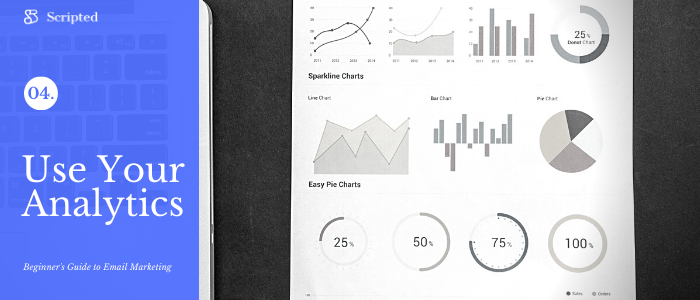
As you test the waters on things like frequency, design, and length, it's important that you're using your analytics to your advantage. A/B testing can also come in very handy, revealing insights into how you can optimize aspects like personalization, subject lines, and so on to get more opens and clicks. Fortunately, most email marketing tools offer a host of analytics that allow you to dig into your subscribers' preferences. Here are the most important metrics you’ll want to track:
-
Bounce Rate: This metric tells you what percentage of emails weren’t delivered (that is, never made it to the target inbox). Regularly check your email list to remove these bounced addresses.
-
Open Rate: This metric tells you how many of the delivered emails were actually opened. The goal? Get it as close to 100% as you can. Rates below 20% mean you need to consider more interesting subject lines.
-
Click-Through Rate (CTR): This metric tells you how many readers clicked a link in your email after opening it. Aim to maximize this by optimizing link placement, CTAs, and content relevance.
-
Unsubscribe Rate: This metric shows the number of recipients who opted out after receiving your email. Try to keep this as low as possible by always delivering high-quality content and meeting subscriber expectations.
As you look at these metrics, remember that you can improve each one using different methods. Reduce your bounce rate by cleaning your email lists periodically. Increase your open rate by testing the sender name, timing, and subject line of your emails. Increase your click-through rate by changing the placement, call to action, and context of your email's offer or links. Reduce your unsubscribe rate by sending on a predictable schedule and offering enticing value that makes subscribers want to stay on your list.
Writing Great Emails
Traditionally, email marketing has relied heavily on manual effort and intuition, but the modern business landscape is changing. Whereas email marketing used to be more art than tech, today it's important to strike a balance between the two.
To write a great email, you need to understand your audience, personalize their content, and ensure that your message resonates with them. However, it's also important to keep your emails short—fewer than 600 characters, including spaces. Given the sheer amount of content you need to deliver to your subscribers and potential customers, 600 characters can feel paralyzingly tight. That's where email sequences come in.
An email sequence is a combination of emails sent one after the other. That is, in a sequence. They're typically sent individually, but can be sent as replies to the same thread, in a way that builds on the information included in the previous emails. A sample sequence strategy for an ECNR (existing customer, new revenue) campaign might look something like this:
- Highlight the partnership and ask how they're responding to specific industry challenges.
- Introduce your solution and describe how it resolves those challenges.
- Dive deeper into the capabilities and functionalities of your solution.
- Follow up one last time, hard-sell your solution, and make an exclusive offer (like a free demo or trial).
Of course, when you're just starting out, you likely won't have much skill with building sequences. Fortunately, AI tools like Scripted's AI email sequence generator can help. Renowned for its ability to rapidly analyze contextual information and generate content, AI is ideal for organizations looking for inspiration based on their unique business context. With the right AI at your disposal, you can ask it to generate dozens or even hundreds of ideas to choose from. Then you can cobble together your favorites and hire an subject matter expert writer to build out or polish the actual content.
Check out our AI content writing services to learn how else AI can help take your email marketing campaign to the next level.
Best Practices of Email Marketing
Navigating the world of email marketing requires you to know more than just the basics. To harness the full potential of this time-tested marketing motif, you’ll need to know these best practices inside and out.
Segment Your List
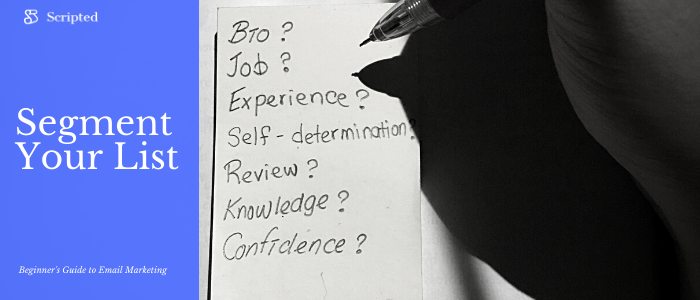
At the heart of effective email marketing lies the art of segmentation. By categorizing your subscribers, you can tailor your content to resonate better with each group. For instance, subscribers interested in product updates might be grouped separately from those who are most interested in your weekly newsletter’s insights. As your list grows, so too does the need to segment your audience.
Segmentation helps make sure that your content aligns with the preferences and expectations of each subscriber, minimizing unsubscribes and maximizing engagement. Rather than segmenting lists based solely on the type of content they’ve opted in for, though, you should consider diving even deeper.
Segment based on demographics, geographical location, and even your subscribers’ interaction history with your brand. With tools like Gen AI, you can gain insights into subscriber behavior, allowing for more accurate segmentation and more engagement from your recipients.
That being said, segmentation isn’t a cure-all for clunky datasets. Over-segmenting can lead to an overwhelming number of lists with too few recipients in each one.
The goal is to find the sweet spot that allows for enough granularity to feel personalized but not so much that it becomes unmanageable.
Try A/B Testing
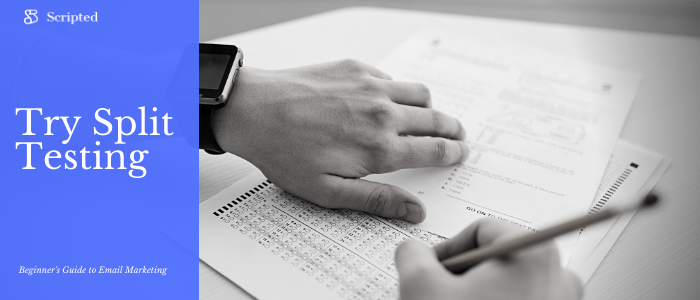
Wondering why your last email didn't get a great response? A/B testing, or "split" testing, is a great tool to use in your email marketing efforts. Using this testing method, you can try different variations of the same email, with one version going to half your subscribers and the other version going to the other half. This is a highly effective way to determine the right subject line wording, heading, layout, CTA, etc. for your emails.
Most email marketing tools have some type of split testing tool built-in so that you can easily begin optimizing your emails for your audience and their preferences. And, with the integration of Gen AI for content writing, you can take these tools even further.
AI can offer insights on content variations, predicting which might perform better based on past subscriber interactions or segmented personas. This fusion or art and technology allows you to support data-driven emails that are not just optimized for your segment but deeply personalized for each audience’s preferences.
Equipping human writers with AI content or AI tools can significantly accelerate the process of A/B testing content. You can use any of Scripted's many AI technologies to generate the bones of your email marketing campaign and then hire freelance writers to flesh it out. This cohesive, complementary relationship allows you to exert greater control over the content your freelancers produce. It also empowers your writers to hone in on your desired messaging, ensure consistent branding, and rapidly iterate versions for you to choose from—ideal for processes like A/B testing.
Optimize for Mobile Delivery
In today’s everybody-has-a-smartphone world, it is easier than ever before for people to check their emails from their mobile devices. This shift from desktop to mobile brings us to our next point: the importance of optimizing your email campaigns for both mobile delivery. The user experience between desktop and mobile can be incredibly different and understanding these differences is crucial for launching an effective email marketing campaign.
On mobile, screen real estate is limited. Lengthy subject lines might get truncated, large images can slow down loading times or distort layouts, etc. You’ll need to craft concise, compelling subject lines that grab attention within the first three words. Leading with a number can help.
We also recommend considering a responsive design that adjusts your email content depending on your recipient’s screen size, providing a consistently valuable experience across a range of devices. Buttons and calls to action should be easily tappable on touchscreens, avoiding any frustration for mobile users who struggle to tap something small like hyperlinks.
Desktop, of course, remains a vital platform to keep in mind when creating email marketing campaigns. But the surge in mobile email readership is something no marketer can afford to ignore.
Write Great Copy
Content reigns supreme! While design, segmentation, and A/B testing play crucial roles in supporting your email marketing strategies, it’s the quality of your copy that ultimately determines subscriber engagement. Delivering high-quality content that’s relevant, compelling, and resonates with your audience is the most important best practice to remember.
By leveraging AI-enabled capabilities, you can craft email copy tailored to your subscribers’ preferences and behaviors at lightning speeds.
If you’re aiming to elevate your email marketing game, consider partnering with Scripted. Our roster of seasoned email copywriters and AI tools for you to use ensures that your emails will strike the perfect balance between being catchy, aligned with your brand, and genuinely valuable. Discover the magic of AI-enhanced email copywriting with Scripted today.
